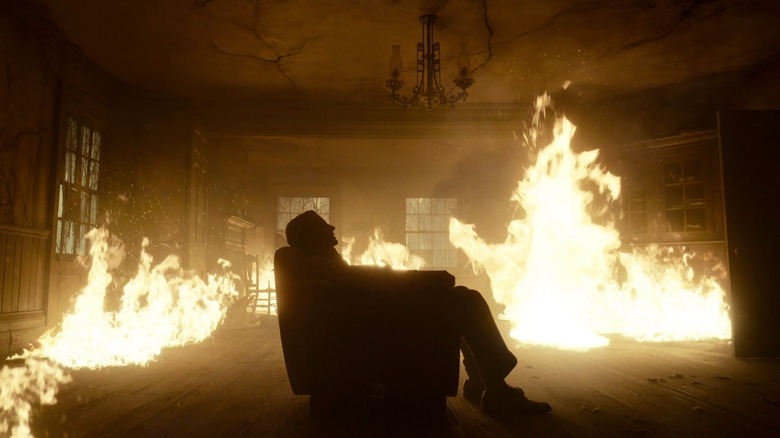
"I hope I don't disappoint," Dan Laustsen said. He doesn't, on the big screen or in person. After years of hearing directors sing the praises of Laustsen, one of the great cinematographers working today, it was a pleasure finally speaking to the man himself. Especially about a film such as Guillermo del Toro's "Nightmare Alley," which, like Stan's (Bradley Cooper) cheap tricks, casts quite a spell on the audience.
Over the years, Laustsen has shot a variety of hypnotizing films, including "John Wick: Chapter Two," "Brotherhood of the Wolf," and two of del Toro's previous films, "The Shape of Water" and "Crimson Peak." Together, del Toro and Laustsen almost always shoot with one camera. Difficult, yes, but the results, for the cinematographer, are worth it.
'I Have Never Seen The Black And White Version'
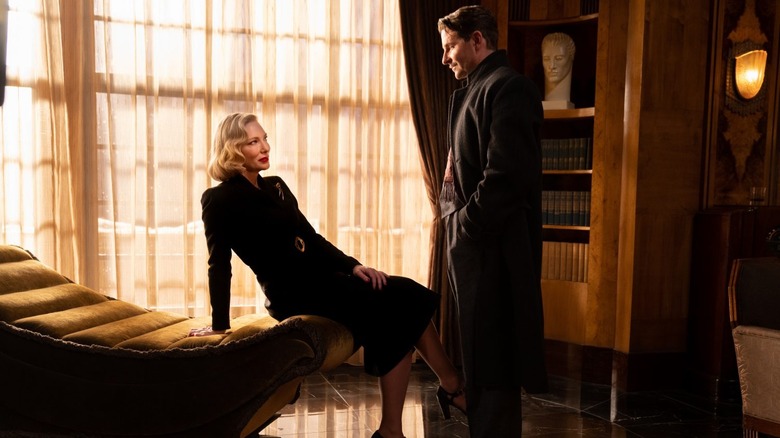
Did Guillermo also have the discussion with you about not thinking about film noir?
Yeah. We just had that conversation when we were doing the movie. We don't want to make a black and white movie, we want to make a powerful color movie. And I have never seen the black and white version. So for me, when I'm working with Guillermo, for example, I'm coming into the project clean. I don't want to see this is as a remake of something. Doesn't matter, because what I'm doing is a movie. I'm not doing something else. I'm just doing this movie. So whatever people have done before is not my call. We just want to do this movie as good as we can. We want to do it like a classic Hollywood movie, but not like a black and white, old fashioned movie.
So what we did, the beginning of the carnival, it's much more soft light comparing to the rest of the movie. So that was one of our discussions. And when we went into the second part of the movie, we want to do it more classical, like a little bit old fashion lighting, but very powerful. And make the black more black, and the highlights nicer, and Cate who just looks like a diva all the time.
Do you think you'll ever watch the original "Nightmare Alley"?
I'm not sure, maybe. When we did "Shape of Water," there was like another fish man story, and I've never seen that. I have nothing against [it] to see this one day, but it's not something like, "I have to see it tomorrow." It's a good movie?
It's very good.
'Smoke Is A Very Powerful Third Dimension'
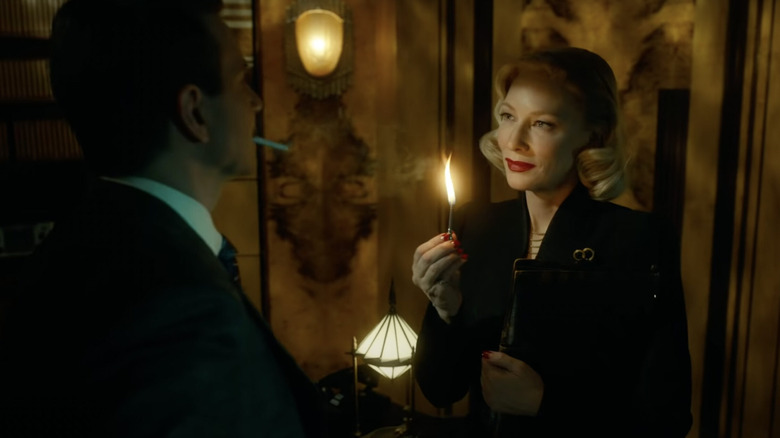
This is a movie filled with so much smoke and mirrors, which is very fitting. How'd you want to use both elements to tell this story?
We talked about smoke in the carnival because I think smoke is a very powerful third dimension to a movie. We didn't have too much smoke between the actors and the camera. We have a lot of smoke in the background. And there was a split between smoke and steam, because I think steam is much nicer than smoke. You can control steam nicer because it's disappearing so fast, smoke is just hanging in the sky. If you can afford to make steam, I think it's much, much better to make steam, but it's much more complicated to make steam compared to smoke.
For example, when he's coming into the carnival first time, I think all the smoke or steam in the background, on the sky, that is going to give so much atmosphere and a little bit of worries into the frame. It's not like it could be a perfect black night. I just think that's boring. So, we talked about that a lot from the beginning, the carnival should be as much smoke we could go in the background, but not between the actors, and it should not be like London burning.
What about the cigarette smoke?
We talked about [how] there should be more, because when you see movies from those days, documentaries, everybody's smoking, like [it's] insane. And of course, as a cinematographer, I really like that, the atmosphere and the Copacabana and stuff like that. But I think when you're using smoke or steam outside, it's just giving a third dimension to [the] image. It's not easy to control sometimes, but when it works, it's just giving so much more powerful images.
You and Del Toro are big fans of single source lighting.
Yeah.
Which moments with single source lighting are you very pleased with?
Cate's office, first time he's coming in there, or second time as well, where you have this very single source light on her. You can do this Hollywood lighting. You can do that very, very soft, but then it's running everywhere and we didn't want to do that. We want to be able to control the light. We want to light her face and nothing else. So we have this single source, a kind of follow spot on her that was moving together with the camera ... When she's in the Copacabana, standing there with a gun, the revolver, the light on her with the shadows on the front head, it's stuff like that I really like.
'We Don't Like Flat Lighting'
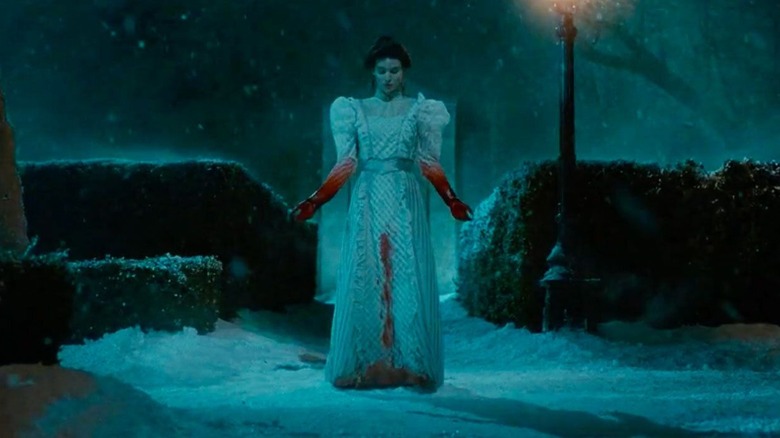
Since Stan is such a mystery as a character, how did you want to express that? How'd you want to shoot him?
What we try to do when he's coming to the carnival, we want to make him more round, more pleasant to look at, but again, synthesized lighting. Shadows on the sides. We like that very much. We don't like flat lighting. We try to fight that all the time. But when he's coming into his second world, we want to make him even powerful because he was more black in the black, he's more shattering, and pick up his eyes. We try to play around with that, shoot him like a much more powerful character compared to the beginning of the movie.
With "Nightmare Alley," Guillermo wanted shots to breathe more than ever before. Did you both talk about that?
We talked about that because when we're shooting, he's shooting shot by shot. He's not shooting master, medium, and close-up. We're shooting the way he's going to edit it. So we are turning around all the time. And of course, that's time consuming, but then you know much more about the performance, and you know much more about your timing in the movie.
As you've said, there's nothing really in Guillermo's movies that's like, "Oh, by the way..." It's very detailed, but any happy accidents as well?
Yeah, I'm sure there is, but I don't remember that right now. I remember we did everything pretty organized, especially because when you're on a crane, everything has to be like blocking. We know where the actors are going to be, where the light is. I'm sure there was something, but I'm just saying most of the stuff is really, really planned. I think actually when they're taking the tents down in the beginning, that rain sequence, the circus tent just coming down. Some of that was because it was so windy, so we just have to do it. But all that is shot from the crane, it works. I love those shots.
The camera moves so elegantly.
Exactly, exactly.
'We Want To Light Her Like She's A Dream.'
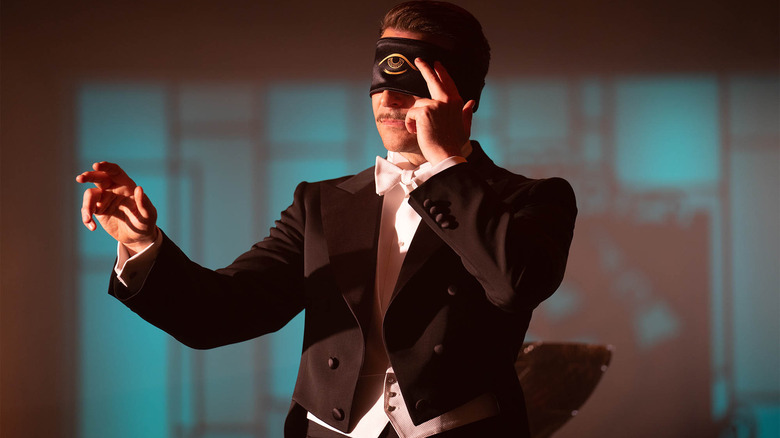
With Stan's descent in the third act, how'd you want to reflect that chaos, though?
For example, that close up after he has knocked that guy down, we have this super, super ... Actually, I think that's the closest shot in the movie. And you just see his head and you see the shadows coming up, and you have this half-lit face. And it's for me [such a] powerful image, and then he's running out. We had sidelight for the whole sequence.
And then when Rooney is coming in, we want to light her like she's a dream, or like a princess, or flashbacks, or whatever. There's no shadows on her, but there are shadows around her. She's just standing there very, very innocent and beautiful. We did that with a moving headlight on a crane above the camera. It's one of the situations we just figure out, "How am I going to do this?" Because it was like, we shot that on location somewhere north of Toronto, with difficult to get light in. I think it's so artificial, but it really works fantastic that scene, because you have the feeling about she's there, and she's not there, because the light is so different on her, but it's still blending in because of the color.
How about creating the sense of space, like Stan is constantly in alleyways?
Yeah. Cate's office was like that a little bit, with that long, very narrow room, no ceilings. And because we want to go pretty wide angle all the ways, we want to be a little bit low with the camera and have this feeling about long, long corridors. I think that's a length choice and a camera angles choice as well. So you have this feeling about, he's always running into a hallway, between the trains, her office, there's a lot of running out of the hallway. Yes, more hallways.
The shot of the bloody handprint in one hallway sequence is chilling. I've heard shooting blood, just getting that red right, is surprisingly difficult.
It is. Yeah, Alexa had the problem with red. But I don't think when you're doing, it's more like when you see a fluorescent. I don't think you have problems when you see the color red on the wall, for example. It's just when you're shooting. We are shooting "John Wick" movies and we have lot of red there all the time, and we have a big issue with red. With Alexa, it's something about the exposure. It's really weird. It is not doing well. If you can take the exposure down in the red, I think it gets more red out, but it doesn't look really right then.
'Blood Is Blood.'
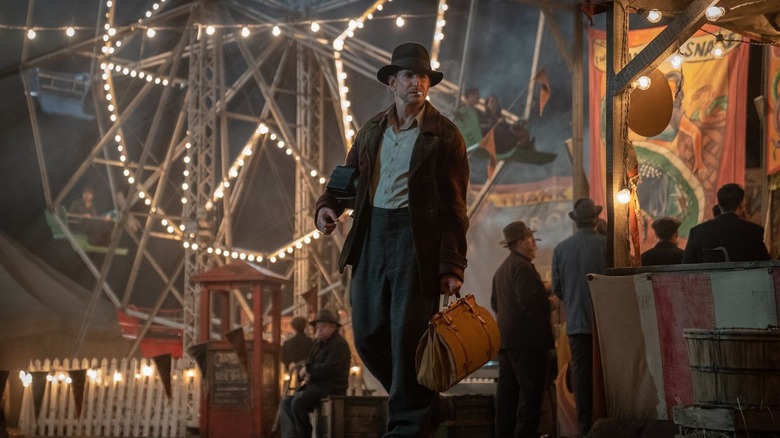
What colors did you and del Toro want to emphasize?
We want to have the split between the gold and the steel blue in that contrast all the time between. For example, in the carnival, and then the steel blue from the back from the smoke and stuff. We talked about that a lot. And of course, blood is blood. When she's sitting there with blood with her hand, that red is just ... But you see, there you don't have any problems with the red. It's just when you see it, when you see it on the color, on a light.
How was your overall experience with the Alexa this time on "Nightmare Alley"?
Well, in this movie, we shot Alexa 65. That means a large format camera with a big sensor and with a very close focus range. And I like that, I like to have this, a big sensor, and the lenses that can cover that, not the full sensor. And then close focus, and then I'm using a diffusion field right inside the camera.
Always one camera with del Toro, right?
We are shooting the one camera all the time. I think 99% of the movie is one camera. With the stunts with the car, maybe we have two or there. But a couple of days, very, very little. So we are carrying two cameras. We are carrying Alexa 65, and we are carrying Alexa mini.
How else did you and del Toro want to create scale? It's such a big movie.
Landscapes have to be wide, wide, wide. The carnival has to be huge. And her apartment is still huge. When we did Cate's office, we made it bigger and bigger, because in the beginning it was a much smaller office. But we just want to have the feeling about, she was in the big room. Small people in the small room, and then in the big room. And we tried to do that as smart as we could with wide angles and lower ceilings. It works okay, I think.
I have an indulgent last question for you. I have to say, I'm a big fan of "Brotherhood of the Wolf."
I'm so happy you saw that.
Great movie. Do you have fond memories making that movie?
Everything, it was a fantastic movie. I was the only one that didn't speak French in that movie. I don't speak French, but it was a fantastic journey. I think Christophe Gans was the first one that really took the martial arts shot on film to another level. A lot of stunts that were super difficult to do, but I think he had... I don't know exactly what's happened with Christophe, but I would say "Brotherhood of the Wolf," there was one mistake, that was the creature.
Really?
Yeah, because we saw the creature too much. Because they didn't want to make it too dark, because they paid so much money for it. It was a mistake. Otherwise, I think the movie is fantastic, I love it. I think he did the first really martial arts classic movie.
What was it like not speaking French on that set?
It was insane. I try to speak English, but that's hard enough for me.
"Nightmare Alley" is now playing in theaters.
Read this next: The 14 Best Noir Movies Ranked
The post Nightmare Alley Cinematographer Dan Laustsen on Shooting Blood, Smoke & Mirrors [Interview] appeared first on /Film.
from /Film https://ift.tt/3mlbGye
via IFTTT
Comments
Post a Comment